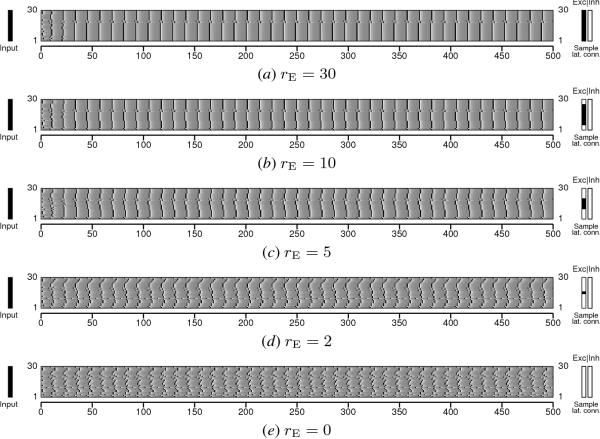
Click on the image to see a PDF version (for zooming in)
Fig. 12.3. Effect of excitatory connection range on
synchronization. A network of 30 neurons with varying extent of
lateral excitatory connections was simulated for 500
iterations. Synchronization occurs through the excitatory connections
even though the connections did not cover the whole network. From (a)
to (e), the lateral excitatory connection radius rE was
reduced from 30 (i.e. full connectivity) to 10, 5, 2, and 0 (the bars
at right depict the connections of the neuron in row 15). All other
parameters were the same as before. Synchronization starts to break
once the radius reaches 2, but for a fairly local connection radius
(e.g. 5), global synchronization is maintained. As expected, with no
excitatory connections (e), the initial random order of spikes is
maintained throughout the simulation. Global synchrony can therefore
be established with local connections.
|